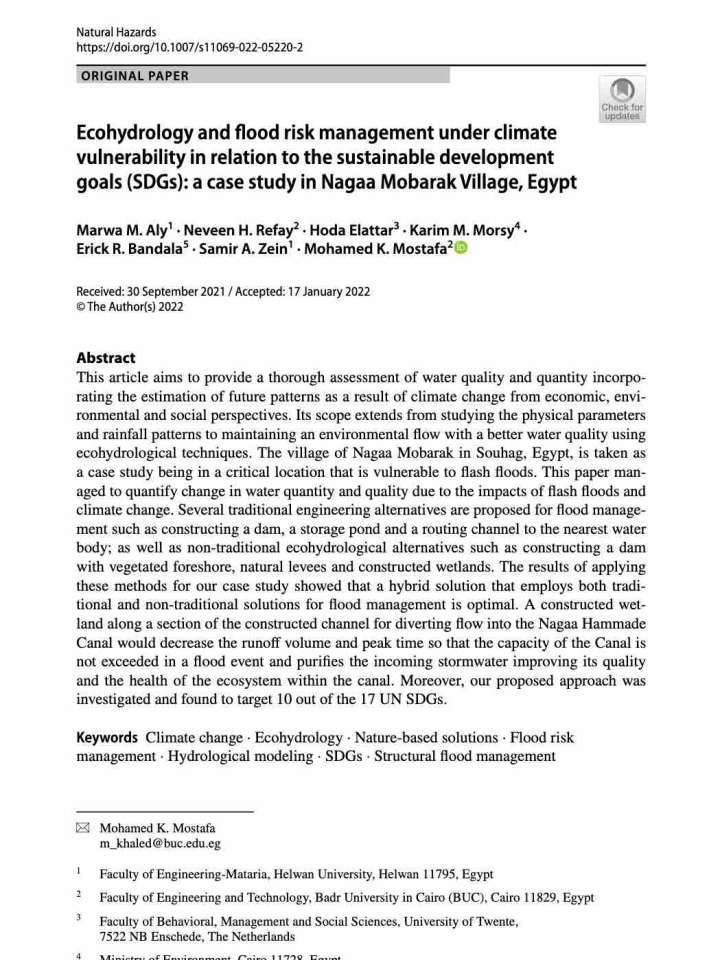Ecohydrology and flood risk management under climate vulnerability in relation to the sustainable development goals (SDGs): a case study in Nagaa Mobarak Village, Egypt
This article aims to provide a thorough assessment of water quality and quantity incorporating the estimation of future patterns as a result of climate change from economic, environmental and social perspectives. Its scope extends from studying the physical parameters and rainfall patterns to maintaining an environmental flow with a better water quality using ecohydrological techniques. The village of Nagaa Mobarak in Souhag, Egypt, is taken as a case study being in a critical location that is vulnerable to flash floods.
The results showed that a hybrid solution that employs both traditional and non-traditional solutions for flood management is optimal. A constructed wetland along a section of the constructed channel for diverting flow into the Nagaa Hammade Canal would decrease the runoff volume and peak time so that the capacity of the Canal is not exceeded in a flood event and purifies the incoming stormwater improving its quality and the health of the ecosystem within the canal. Moreover, our proposed approach was investigated and found to target 10 out of the 17 UN SDGs.
Explore further
